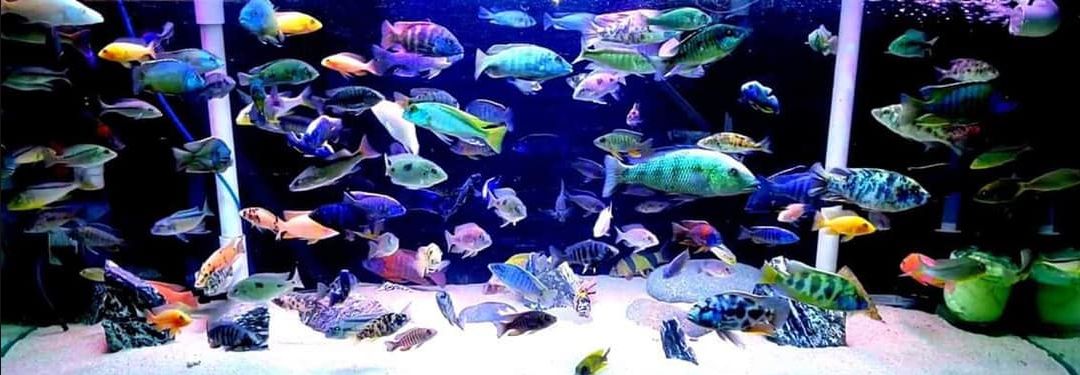
What is “Cycling”?
In a nutshell, fish pee is a somewhat poisonous material (ammonia, that cleaning stuff that smells bad). This material is rendered harmless in an established aquarium by very slow-growing “beneficial bacteria” which grow ONLY on the surface of structures like biomedia and sponges in the filter. This process is called the “Nitrogen Cycle”.
In a new aquarium being started up these “beneficial bacteria” take anywhere from 2 to 8 weeks to grow to sizable colonies in filter media. So, if you put many decent-sized fish in an aquarium right away and feed them a lot of food, those fish may very rarely get stressed from their pee and may, in extreme circumstances, even die.
Many hobbyists start up a new aquarium before adding the fish by running it as a filtered heated aquarium with food being added daily for 2 to 8 weeks. This is called “fish-less cycling” in an aquarium. Easy.
We will cover the topic of fish-less cycling in layers. The first layer will be very simple. Then progressively more complicated points will be introduced. This layering makes for a long and boring article.
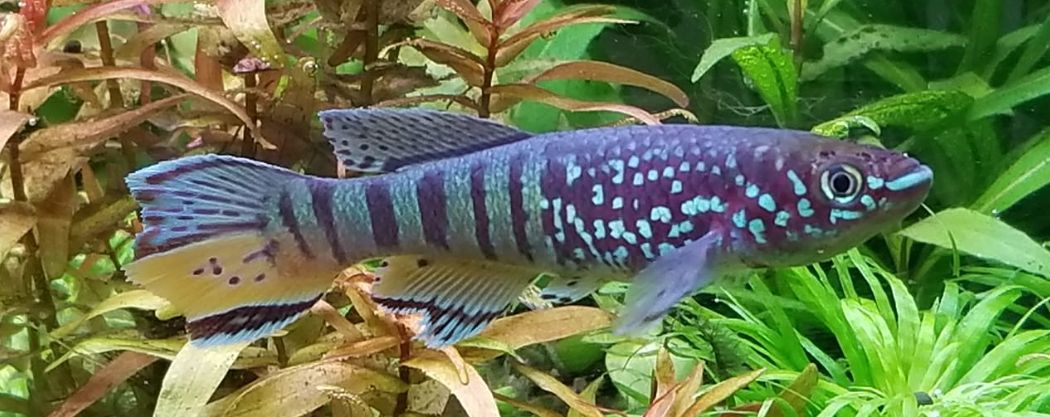
Level #1; The Very Basic Fish-less Cycling an Aquarium
If you are a beginner with a new aquarium, keep things simple. Fill the aquarium with water and add chlorine conditioner per the directions. Start all the filters. Don’t add any fish. Wait at least four weeks before adding the fish.
Add at least one level teaspoon per 25 gallons of brown gunk-filled material from an established aquarium filter (the best material), composted (WELL COMPOSTED, not fresh!) cow manure, or dirt from the garden, or the soil from a potted plant to the new aquarium. These “seed” materials all contain lots of beneficial bacteria which will jump-start the cycling process in the aquarium. Note commercial packaged potting soils are sterilized and will not work. Put the seed material in a sock and put it in the filter. Squeeze the sock every few hours. Remove the sock after two weeks or so. Aerate the water well with air stones and an air pump.
Add about one-eighth teaspoon of dry fish food and one level teaspoon of human urine per 20 gallons of water per day to an aquarium with no fish in it. Keep adding the food and urine daily till your tank is cycled. The food will get all gross with white “stuff”. Ignore it. The food has to decompose to feed the “beneficial bacteria”.
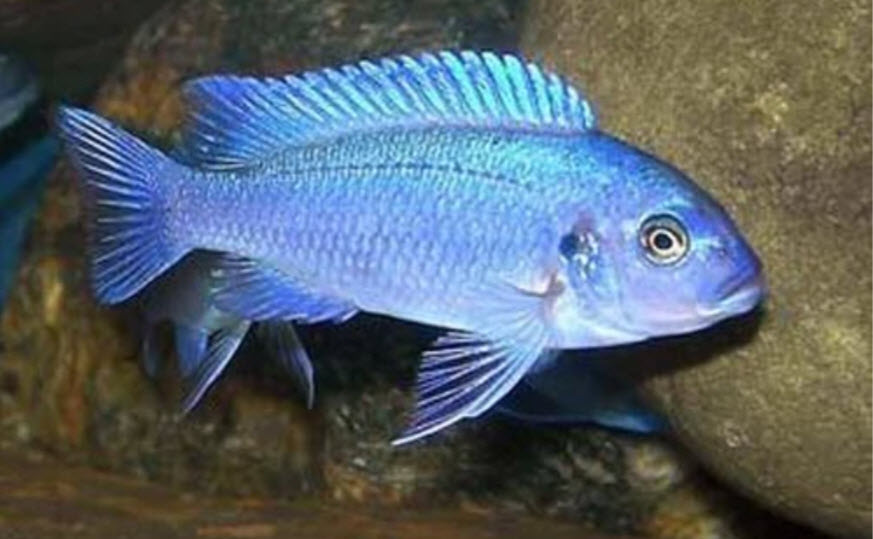
Do no water changes if the ammonia, nitrite, or nitrate go high. DO NOTHING other than continuing to add food and urine. Remember the three most important things to have during fishless cycling:
.
Patience, Patience, and Patience
.
Wait two to four weeks. The aquarium will typically get very cloudy and may even get green and smell. Pay no attention to it but just keep adding food and urine. Finally, the water will turn clear, often overnight. At that point the aquarium filter is “cycled” and fish can be added.
Don’t add a lot of fish or a large fish. Start slow and build up. Also never thoroughly clean the filter. Cleaning removes the beneficial bacteria. Brown “goop” is beneficial bacteria. “Beneficial bacteria ain’t pretty”. Just remove the goop that is clogging it up with a single light rinse in a tub or a bucket, never under running water. Just clean the outside of the dirty cartridges with a little brush. NEVER change cartridges. Changing cartridges is one big scam.
This is the simple fish-less way to cycle an aquarium filter. Easy!
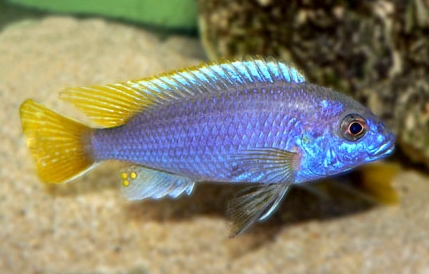
Level #2; Using Tests with Fish-less Cycling in an Aquarium
If one wants to, get an aquarium test kit and measure the ammonia and nitrite. We recommend having patience and waiting at least three weeks before doing ANY testing. Then test twice a week or so. Test kits are expensive and testing every day from day one is not recommended.
Keep measuring until the ammonia spikes and starts coming down. Then add the measuring of the nitrate (note the difference between nitrAte and nitrIte) in addition to the ammonia and nitrite. In most cycles, the nitrite then goes high, then starts coming down (sometimes there is never any nitrite showing in the tests). Sometimes no nitrate shows up.
The end of cycling is defined as when ammonia hits 0.25 or less 24 hours after adding some “feed” (ammonia, food, or urine). If nitrite is present it needs to hit zero before the aquarium is cycled. There does NOT need to be nitrate.
At that point, if you have more than 80 ppm nitrate, do a 50% water change. If you have 160 ppm nitrate do an 80% water change.
And you’ll then have a “cycled” aquarium (technically you have a cycled filter).
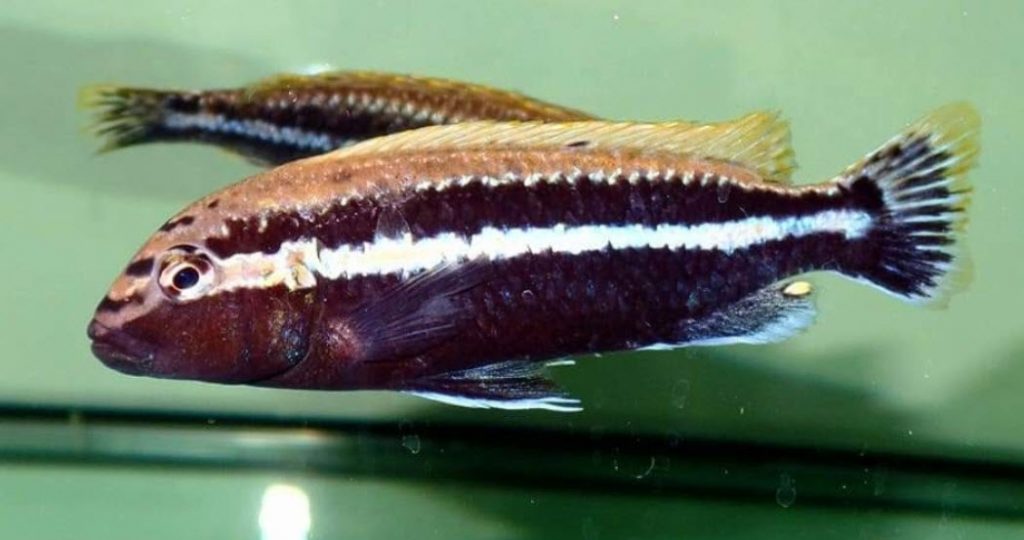
Level #3; Complex Fish-less Cycling of an Aquarium
There are many ways to successfully cycle an aquarium without fish:
- The ammonia “feed” can be food, chemical ammonia, ammonium chloride, or even urine.
- You can add a large amount of feed like a whole shrimp in a sock or you can add small amounts of “feed” over time.
- The beneficial bacterial “seed” can be nothing, soil, filter media from an established aquarium, composted manure, brown gunk squeezed from a sponge filter, or potted aquatic plants.
- You can do no water changes or a lot of water changes
- Some people test everything once a day or more while some never test anything.
This is far from an exact science and many things work.
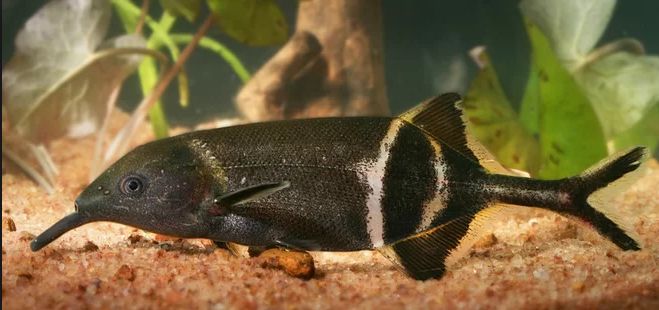
Speeding up Fishless Cycling
There are several ways to speed up fishless cycling:
- Add one heaping teaspoon of composted cow manure, dirt from the garden, soil from a potted plant, or brown gunk from the filter of an established aquarium per 25 gallons of water to the aquarium. This “seeds” the beneficial bacteria very well, much better than any bacteria in a bottle product can do
- When asked “How do I speed up cycling” on social media, many times you will see someone say “pee in the tank”. And there will be a lot of laughs shared by all. Newsflash: this is good advice. Fish food takes one to two weeks to break down into ammonia and start feeding the beneficial bacteria. Human urine breaks down into ammonia overnight. So putting two tablespoons of human urine per 25 gallons in at the start of a fishless cycle is a very good idea.
- Beneficial bacteria thrive best at a pH of 7.4 to 7.8. So, adding one tablespoon of baking soda per 25 gallons speeds up the cycling. It is recommended to always keep the pH above 7.0 by adding baking soda when the pH drops during cycling
- Adding a lot of aeration via a decent-sized air pump and air stones or by lots of “choppy waves” at the surface of the tank water will speed up the cycle. Beneficial bacteria need at least 80% oxygen saturation to do well.
- Note also that the whole cycling “science” is a natural process. There are hundreds of variables that one cannot control. So sometimes one can cycle in days and sometimes it can take months, no matter what one does. Mother Nature is just not very predictable.
To go into all the various more complicated ways to cycle an aquarium without a fish click on the following links:
2.2. The Many Ways to Cycle a Tank
2.3. How I Cycle a Tank
2.4. Cycling with Ammonia
.
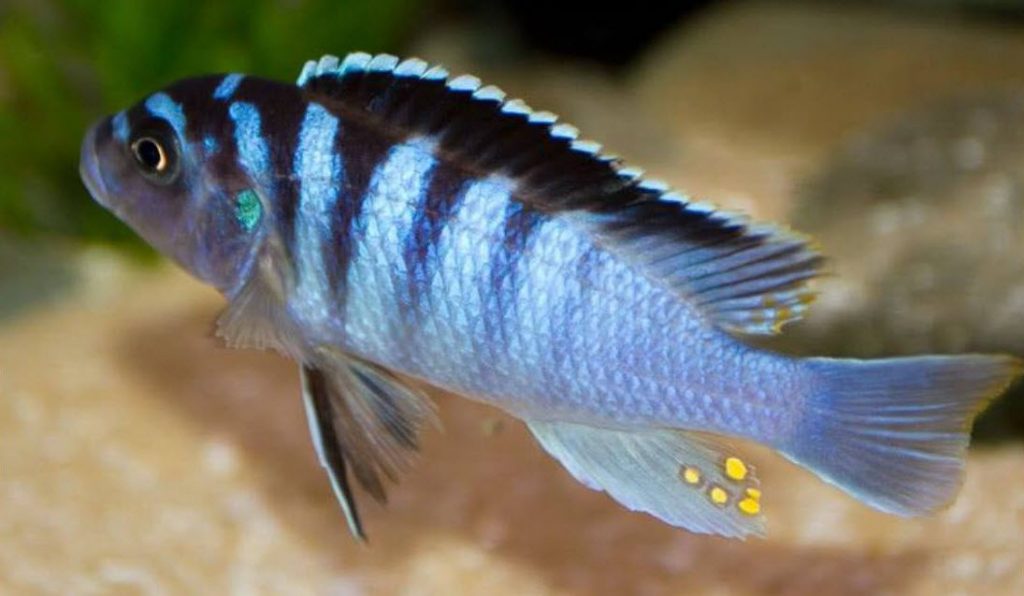
Ineffective Products for Cycling
Some folks advocate adding “starter bacteria” such as Seachem Stability. Testing showed these products simply don’t work. This link reviews that test:
2.8. Bacteria-in-a-bottle
Adding Seachem Prime or other chemicals during cycling is also a waste of money. You can’t “detoxify” ammonia with chemicals. More about that in:
2.9. “Instant Cycling” Chemicals
.
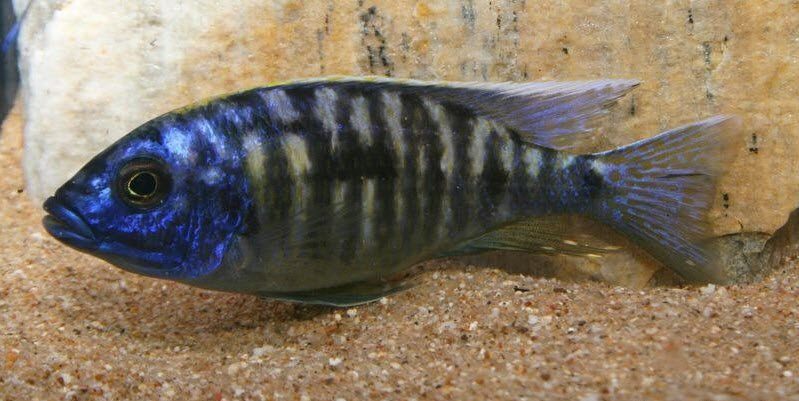
What Research has Revealed About Cycling
Very many university researchers have found the following:
- If one can get the brown squeezings water from an established sponge filter, pour this into the water in the new tank and the cycle will occur in the fastest time possible. It is important to get these brown squeezings “stuck” in a place where there is good flow, like on the filter media. If one just leaves it lying at the bottom of a tank it won’t work very well. I keep stirring the tank whenever I use brown squeezings, like ten times a day. To oxidize ammonia beneficial bacteria need both a surface to attach to AND a good flow over that surface
- Phosphate turns out to be very important to beneficial bacteria by testing. So after the aquarium is set up and filled with water add a quarter teaspoon of a phosphate powder (potassium phosphate, sodium phosphate, or any one of several calcium phosphates, or a high phosphate “bloom” fertilizer like Scott’s Super Bloom 12-55-6, Flower Fuel 1-34-32 or Miracle-Gro Bloom Booster 15-30-15) per twenty-five gallons of water.
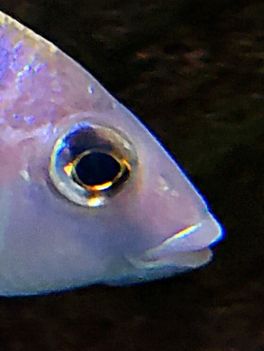
- Good garden soil and composted manure have 19 million beneficial bacteria in one small gram. This is many times more than a whole bottle of store-bought bacteria-in-a-bottle. So a handful of soil or compost will seed a new aquarium about as well as the brown gunk from a sponge filter. Soil and compost thrown into aquarium water do cloud the water, but it clears in a week or two. Note commercial soil mixes from the garden store do NOT work (they are sterilized).
- The pH for cycling should be above 7.0 and MUST be above 6.5. The fact that low pH inhibits cycling was confirmed by tests in 2.13. link below.
- Conversion of ammonia to nitrate absorbs carbonate (KH) and drops the pH. The more ammonia and food being added the faster the pH drops. It is recommended to always keep the pH above 7.0 by adding baking soda when the pH drops during cycling. A bag of crushed coral in the filter will also help keep the pH up and the KH level reasonable.
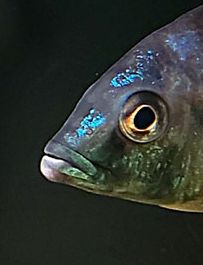
- Lots of aeration will both speed up the cycling process and keep the smells down (cycling can be smelly!).
- The optimum level of nutrients for beneficial bacteria growth is 400 to 600 ppm of ammonia and 200 to 400 ppm of nitrite (per no less than 8 papers and two books). So high levels of either ammonia or nitrite do not stall the cycle. But note that if an aquarium has a small filter, or has poor filter media, an ammonia addition over 1 ppm every day can make cycling a very long process.
- Beneficial bacteria CAN sometimes incorporate nitrate into their bodies as protein (“assimilatory denitrification”). This can give zero nitrates in a cycled tank. Plants can also give zero nitrates in a cycled tank. Thus the end of cycling is defined as when ammonia has spiked to at least 1.0 and then hits 0.25 or less 24 hours after adding some “feed” (ammonia, food, or urine). If nitrite is present it needs to hit zero before the aquarium is cycled. There does NOT need to be nitrate.
- Nitrate levels are immaterial during cycling. When both ammonia and nitrite go to zero (the official “end” of cycling) do enough of a water change to bring the nitrates to a reasonable level (anywhere from 40 to 160 ppm is a fine goal)
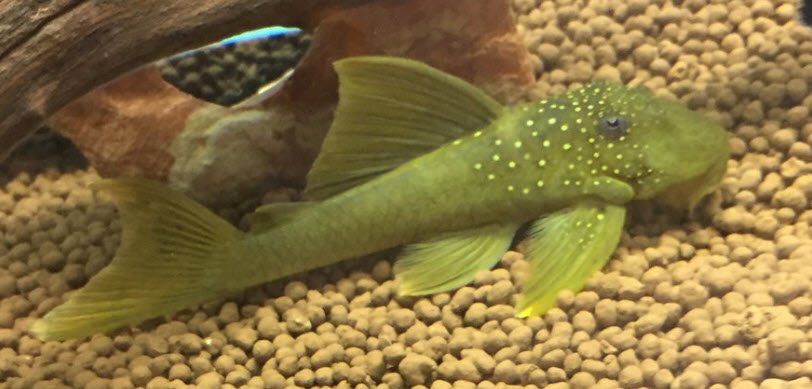
Common Errors
- Once the tank is cycled it is important not to clean the brown gunk out of the filters or to change filter cartridges. “Cycling an aquarium” is an incorrect definition of cycling. One cycles a filter. The brown gunk inside the filter on the filter media is beneficial bacteria. Clean it and the cycle starts all over again.
- Plants remove ammonia, nitrite, and nitrate from the water. Since ammonia and nitrite are required during cycling to feed the beneficial bacterial growth, adding plants to the aquarium during cycling can sometimes prevent the tank from cycling.
- The most common mistake in cycling is to panic and do water changes when the water turns cloudy or green, or the ammonia or nitrite levels rise. Water changes remove the feed for the beneficial bacteria and stop the cycle. One needs to just ignore the cloudiness or the green. For more on that topic click on these links:
6.2.3. Cloudy Water
16.7. Green Water
.
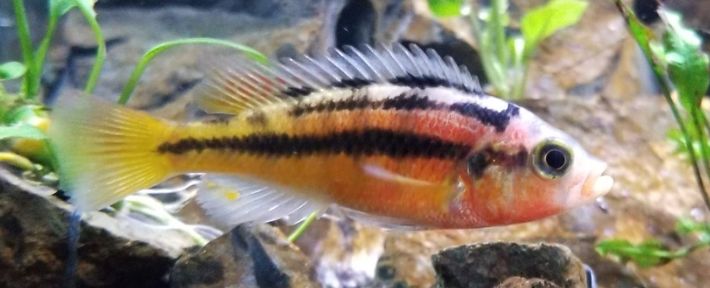
Additional Articles on Cycling
There are a bunch of ways for newcomers and experienced hobbyists to make mistakes in cycling. One is reviewed at this link:
2.7. New Tank Syndrome
Then there is the science behind cycling for those who are curious. This science is reviewed in the following links:
2.10. The Nitrogen Cycle
2.11. Inoculate for Cycling
2.12. Beneficial Bacteria
2.13. Cycling Test
.
Return to Cycling Menu
.
Aquarium Science Website
The chapters shown below or on the right side in maroon lead to close to 400 articles on all aspects of keeping a freshwater aquarium. These articles have NO links to profit-making sites and are thus unbiased in their recommendations, unlike all the for-profit sites you will find with Google. Bookmark and browse!
.

Dave says
In reply to Jessica …… Any human urine is safe for the fish. I would only be hesitant in the case of a breeder tank and birth control pills.
Jessica Devine says
Hi Dave!
I am new to fishkeeping and am soaking in as much information from your incredible site as my brain allows 🙂 I have a question regarding the addition of human urine to a fishless cycling tank. If someone takes medications, is their urine safe to add to tank or could this have a detrimental effect on any fish later added?
Kind regards, Jessica
Greg says
Hi Dave,
I’m new to the hobby and am very much appreciating all of the information you’ve compiled. I had a clarification question regarding using urine to help with cycling (never would have thought of this but it makes sense!). On this page, you said:
“Add about one-eighth teaspoon of dry fish food and one level teaspoon of human urine per 20 gallons of water per day to an aquarium with no fish in it. Keep adding the food daily till your tank is cycled.”
Should you use food AND urine daily? Or just food? There is another place on this page where you recommend 2 tbsp of urine just at the outset.
Thanks!
Dave says
In reply to Sagi …. There is no reasons I can come up with to recommend cycling an aquarium if no fish are planning on being introduced.
Sagi says
Why is, basically, important to cycle a new established planted aquarium with no fish intending to introduce? Plants benefit from beneficial bacteria?
WT says
Hi Dave, I have proceeded to add fish to the tank 2 weeks ago with a 90% water change. This is a week after the Seachem Ammonia Alert turned yellow. Currently housing 10 juvenile discus and 8 corys. Feeding beefheart mix twice a day. However my nitrites and nitrates are always zero, ammonia alert yellow. No plants in the tank, temperature is 29 degrees with PH 6.4. Water clarity looks clear probably cos I’m running a 7W in-line UV. Should I be concerned this might be due to assimilatory denitrification? If so, what are the correction actions I can make now the fishes are in? Thank you for you valuable advice in advance.
Dave says
In reply to WT ….. To the contrary, it indicates the tank is NOT cycled. You need to see yellow, i.e. “safe” with this particular test.
WT says
Hi Dave, I went to get a Seachem Ammonia Alert and it is showing Green Alert, 0.05 ppm, Is this a reliable indicator that the tank is cycled? Thank you for you guidance.
Dave says
In reply to WT ….. The white mold can absorb the nitrate and prevent it from showing up in test kits. Just keep on trucking with the 2 level teaspoons per day till the ammonia is less than 0.25 ppm. The white mold will go away on its own with time.
WT says
Hi Dave,
Thank you for the quick response.
If I just continue cycling the tank for the full 15 days, should I be getting some reading of nitrate on the test strips in the end? Also, if I double the fish food feedings to 4 tsp a day, will I get a more robust bio filtration?
About the white mold on the drift wood, does it have any impact on the cycling? Does it have to be manually removed or some form of beneficial bacteria will eventually consume it?
Thank you
Dave says
In reply to WT …. You will need to buy an ammonia test kit and wait till you get 0.25 ppm or less ammonia to be sure you have a “cycled” tank. But based on what you say you are doing everything right and it should be cycled in a matter of at most 15 days.
WT says
Hi Dave,
I just started a fishless/plantless cycling of a 60 gallon (sand substrate and a new piece of driftwood) 6 days ago.
Tap water is dechlorinated and 4 tbsp of baking soda were added. Lots of surface agitation. New oase 600 cannister filter is filled with pot scubbers, K1, sponges and small bag of crushed coral.
Seeded the new cannister with a pail of brown gunk and some cycled media (4 pot scrubbers and small bag of K1) from another established 9 month old cannister.
On Day 1, I fed the tank with a cup of smelly water prepared with 4 tsp of various dry fish food and left to rot a week prior.
Been feeding the tank 1 tsp of dry fish food twice a day. All feds are directly into the filter via the inflow.
Water turned very cloudy/murky on day 2 and suddenly turned cleared on day 4, but driftwood is now covered with white mold.
I only got some API test strips which is showing zero nirite and nitrate.
What is the indication for me to know the tank is cycled and ready?
Thank you for your valuable response in advance.